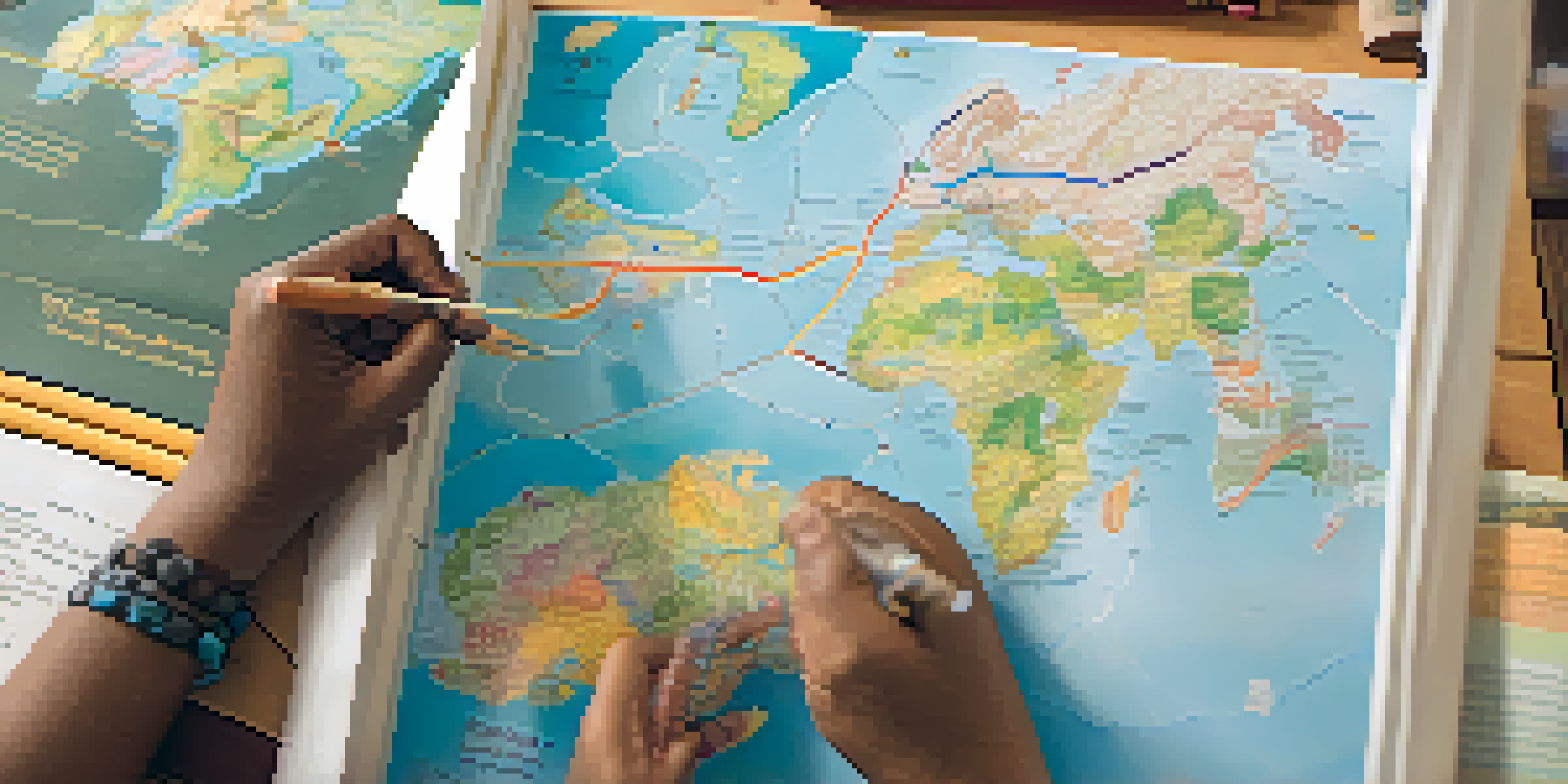Exploring Indigenous Perspectives in Culturally Responsive Teaching

The Importance of Indigenous Perspectives in Education
Indigenous perspectives play a crucial role in education by providing diverse viewpoints that enrich the learning experience. These perspectives help students understand the complexities of history and culture, fostering empathy and respect for all backgrounds. By integrating Indigenous knowledge, educators can create a more inclusive environment that values every student's identity and heritage.
Principles of Culturally Responsive Teaching
Culturally responsive teaching is an approach that recognizes the importance of including students' cultural references in all aspects of learning. This method encourages educators to adapt their teaching styles to meet the diverse needs of their students, creating a more engaging classroom. By valuing students' cultural backgrounds, teachers can build stronger relationships and improve overall academic performance.
Value of Indigenous Perspectives
Integrating Indigenous perspectives enriches education by fostering empathy and respect for diverse cultures.
Building Relationships with Indigenous Communities
Establishing strong connections with Indigenous communities is vital for effective culturally responsive teaching. Educators should actively seek to engage with local Indigenous leaders and families to understand their values and traditions better. These relationships not only enrich the curriculum but also foster trust and collaboration between schools and communities.
Incorporating Indigenous Knowledge in Curriculum
Integrating Indigenous knowledge into the curriculum can enhance students' learning experiences and promote cultural awareness. This can be achieved through storytelling, traditional practices, and the inclusion of Indigenous authors and perspectives in reading materials. By exposing students to these rich narratives, educators can cultivate a deeper understanding of Indigenous cultures.
Building Community Connections
Strong relationships with Indigenous communities enhance culturally responsive teaching and create collaborative learning environments.
Challenges in Implementing Indigenous Perspectives
Despite the benefits, there are challenges in implementing Indigenous perspectives in education. Some educators may lack the necessary training or resources to effectively incorporate these viewpoints into their teaching. Additionally, systemic barriers within educational institutions can hinder the integration of Indigenous knowledge, making it essential to advocate for change.
Professional Development for Educators
Ongoing professional development is essential for educators to effectively teach Indigenous perspectives. Workshops, training sessions, and resources focused on Indigenous cultures can equip teachers with the tools they need to create a more inclusive classroom. By investing in their professional growth, educators can become more confident in their ability to engage with diverse perspectives.
Need for Educator Training
Ongoing professional development equips educators with the skills necessary to effectively incorporate Indigenous knowledge in the classroom.
Creating an Inclusive Classroom Environment
An inclusive classroom environment is one where all students feel valued and respected. By celebrating diversity and promoting understanding, educators can help students appreciate different cultures, including Indigenous perspectives. Strategies such as collaborative projects and multicultural events can foster a sense of belonging for all students.
The Future of Culturally Responsive Teaching
As society continues to evolve, the need for culturally responsive teaching will remain crucial. By embracing Indigenous perspectives, educators can prepare students to thrive in a diverse world. Ultimately, fostering an inclusive educational environment will not only benefit Indigenous students but enrich the entire learning community.